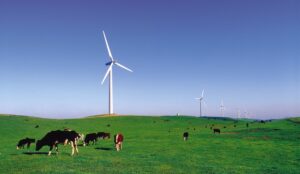 Carbon Tracker Initiative (CTI), the NGO that invented the concept of “stranded assets” (or “the carbon bubble”) has today published a new report warning that, as a result of climate policies, “no new coal will be needed, oil demand will peak around 2020 and growth in gas will disappoint industry expectations”. According to CTI, over $2 trillion of new and existing investment is in danger of being wasted over the coming decade if governments and companies don’t take action to divert investments away from fossil fuels.
Carbon Tracker Initiative (CTI), the NGO that invented the concept of “stranded assets” (or “the carbon bubble”) has today published a new report warning that, as a result of climate policies, “no new coal will be needed, oil demand will peak around 2020 and growth in gas will disappoint industry expectations”. According to CTI, over $2 trillion of new and existing investment is in danger of being wasted over the coming decade if governments and companies don’t take action to divert investments away from fossil fuels.
The $2 trillion stranded assets danger zone: How fossil fuel firms risk destroying investor returns maps out coal, oil and gas supply that “makes neither financial nor climate sense in a 2˚C world and how this affects both listed and public companies”. The report warns: “If the industry misreads future demand by underestimating technology and policy advances, this can lead to an excess of supply and create stranded assets. This is where shareholders should be concerned – if companies are committing to future production which may never generate the returns expected.”
According to the report, the US has the greatest financial exposure with $412 billion of unneeded fossil fuel projects to 2025 at risk of becoming stranded assets, followed by Canada ($220bln), China ($179bln), Russia ($147bln) and Australia ($103bln).
The companies that represent the biggest risk are a mix of state and listed companies, including oil majors Royal Dutch Shell, Pemex, Exxon Mobil, and coal miners Peabody, Coal India, and Glencore. Around 20-25% of oil and gas majors’ potential investment is on projects that will not be needed in a 2˚C scenario.
The report notes that “energy companies must avoid projects that would generate 156 billion tons of carbon dioxide (156Gt CO2), in order to be consistent with the carbon budget in the International Energy Agency’s 450 demand scenario, which sets out an energy pathway with a 50% chance of meeting the UN 2⁰C climate change target.”
Overhang
Carbon Tracker already warned last month that big energy companies are ignoring rapid advances in clean technologies which threaten to undermine their business models, such as renewables, battery storage and electric cars, in a report challenging nine business as usual assumptions made by the industry to argue that coal, oil and gas will all continue to grow in the next decades.
The main conclusions from the new report:
COAL – In a 2˚C world, demand can be met from existing mines and no new mines will be needed. “It is the end of the road for expansion of the coal sector,” the eport states. Over the next decade, capital expenditure of $177 billion on new projects and $42 billion on existing ones is unneeded.
China, the US, Australia, India and Indonesia have the greatest exposure, accounting for over 90% of unneeded investment. Export markets are in structural decline as China seeks to peak its coal demand and India aims to become more self-sufficient in energy, threatening big exporters like Australia and Indonesia. In the US half of all potential projects from Peabody, Murray and Foresight will be unneeded.
OIL – “In the 450 scenario oil demand peaks around 2020. This means the oil sector does not need to continue to grow, which is inconsistent with the narrative of many companies,” the report states. Spending of $1.3 trillion on new projects and $124 billion on existing projects is unneeded. Overall 43% of investment in new projects and 33% of new supply should be avoided to align with a 2˚C scenario, avoiding 28Gt of CO2.
GAS – In a 2C world gas growth will be “at a lower level than expected under a business as usual scenario”, the report finds. Capital expenditure of $459 billion on new projects and $73 billion on existing projects is surplus to requirements. Overall 41% of investment in new projects and 25% of new supply, accounting for 9 Gt of CO2, is unneeded.
The US, Australia, Indonesia, Canada and Malaysia have the greatest exposure, accounting for three-quarters of investment risk. Within the markets we analyse (North America, Europe, and the LNG export market), two-thirds of new coal bed methane and Arctic projects are in the danger zone; half of the supply in new LNG projects is unneeded and very little new capacity will be needed in the US and Canada in a 2˚C scenario.
CARBON CAPTURE AND STORAGE – Carbon Tracker’s analysis assumes 24Gt of CO2 will be captured by CCS by 2035 in line with the IEA 450 scenario, but it warns that “this would require CCS to grow to a level 150 times where it is today. Delays in CCS could significantly increase the reductions in coal that will be needed and the IEA has estimated that a 10-year delay in large-scale CCS deployment from 2020 to 2030 could cost fossil fuel producers $1.35 trillion in lost revenues.”
Carbon Tracker has the following recommendations to offer.
- For investors: derisk your portfolio by identifying companies aligned with a 2 ˚C scenario.
- For governments: stress test national resources, infrastructure and energy plans against a 2 ˚C scenario.
- For companies: provide information on the decisions taken to align the company with a 2 ˚C scenario.
- For analysts and advisors: provide sensitivity analysis of which stocks are most resilient to a 2 ˚C scenario.
Source: Energy Post. Reproduced with permission.







